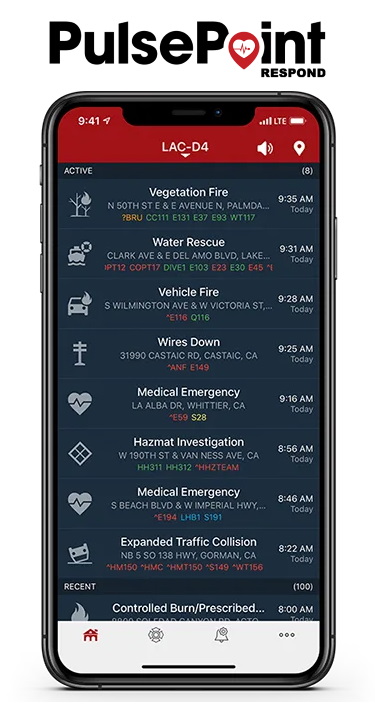PulsePoint Respond
Enabling Citizen Superheroes
 There's power in our community - bystanders ready to help save more lives from sudden cardiac arrest. But how do we seize that potential and activate our citizens to change patient outcomes? The answer is PulsePoint Respond. Where adopted, PulsePoint Respond empowers everyday citizens to provide life-saving assistance to victims of sudden cardiac arrest.
There's power in our community - bystanders ready to help save more lives from sudden cardiac arrest. But how do we seize that potential and activate our citizens to change patient outcomes? The answer is PulsePoint Respond. Where adopted, PulsePoint Respond empowers everyday citizens to provide life-saving assistance to victims of sudden cardiac arrest.
The Cincinnati Fire Department, UC Health, and the Cincinnati Emergency Communications Center are partnered with PulsePoint to improve cardiac arrest outcomes in Cincinnati.
How does it work?
App users who have indicated they are trained in cardiopulmonary resuscitation (CPR) and willing to assist in case of an emergency can be notified if someone nearby is having a cardiac emergency and may require CPR.
If the cardiac emergency is in a public place, the location-aware application will alert users in the vicinity of the need for CPR simultaneous with the dispatch of advanced medical care. The application also directs these potential rescuers to the exact location of the closest Automated External Defibrillator (AED). Alerts are not generated for CPR if the emergency is in a private place, such as a residence.
Learn more:
Connected to Cincinnati 911
The PulsePoint Respond app is available for Apple iOS and Google Android devices. This app is connected to our ECC Computer-Aided Dispatch (CAD) system. It informs users about emergencies occurring in their community, and can request their help with CPR is needed nearby. Sudden cardiac arrest can happen to anyone, at any time, but PulsePoint Respond empowers CPR-trained citizens to help improve patient outcomes and save lives by reducing collapse-to-CPR and collapse-to-de¿brillation times. For extremely time-sensitive emergencies like cardiac arrest, notifying “first-first responders” that are in the immediate vicinity of an event, simultaneously with the conventional Fire/EMS response, offers the potential to improve outcomes. By expanding situational awareness beyond the purview of a traditional witnessed arrest radius, the opportunity to instantly draw skilled individuals, including off-duty health care professionals, grows, enabling critical life-sustaining BLS interventions to begin sooner and more often, and potentially of higher quality.
